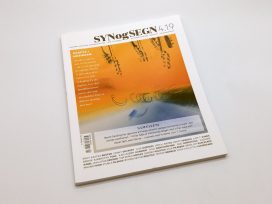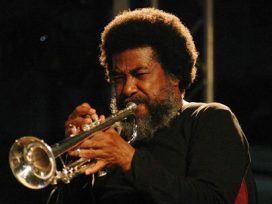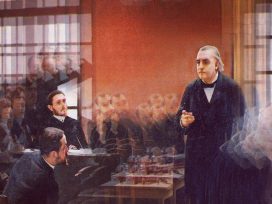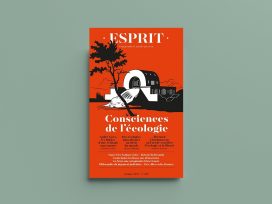New knowledge about the neurological effects of music coincides with revived musicological interest in the body. Does this mark a return to the Enlightenment view of music as a matter of the nervous system? A survey of modern musical aesthetics through the lens of medical history.
Anyone who has ever given any thought to their own listening experience knows that music can have potent physiological effects, from frissons down the spine to spikes in heart rate and blood pressure. And anyone, especially maybe those who have felt the impact of massive modern amplification technology in their lungs, knows that the body can literally resonate with music. What other art form can match music in terms of this directly physical power?
That power has long been the basis of much of the discussion of music’s potential as a form of therapy, and has also led to a huge amount of anxiety about the supposed ability of music to cause disease, to hypnotise listeners or to kill them stone dead.1 Thus, while the whole business of Musica Sanae, the role of music on health, is often depicted as a marginal and perhaps slightly whimsical aspect of the art form, because of this sheer inevitable physicality of music, theories of how music can cure the body or provoke illness are related to some of the biggest issues in our understanding of music in general.
Fundamentally embodied models of listening have become dominant in many ways over recent decades, putting medical and scientific thinking at the heart of the aesthetics of music. This approach is often combined with the ‘common sense’ notion that music is, in a much over-used cliché, the ‘language of emotions’, even if in fact the role of feeling in music is by no means a settled question in aesthetics. The combination of the apparent direct physical nature of listening (compared to, say, reading a novel), and the recurring idea that ‘understanding’ music, achieving knowledge about its character, is a matter of grasping its emotional content, has made music the location of an ongoing debate about the relationship between emotions, medical and aesthetic knowledge and the body.
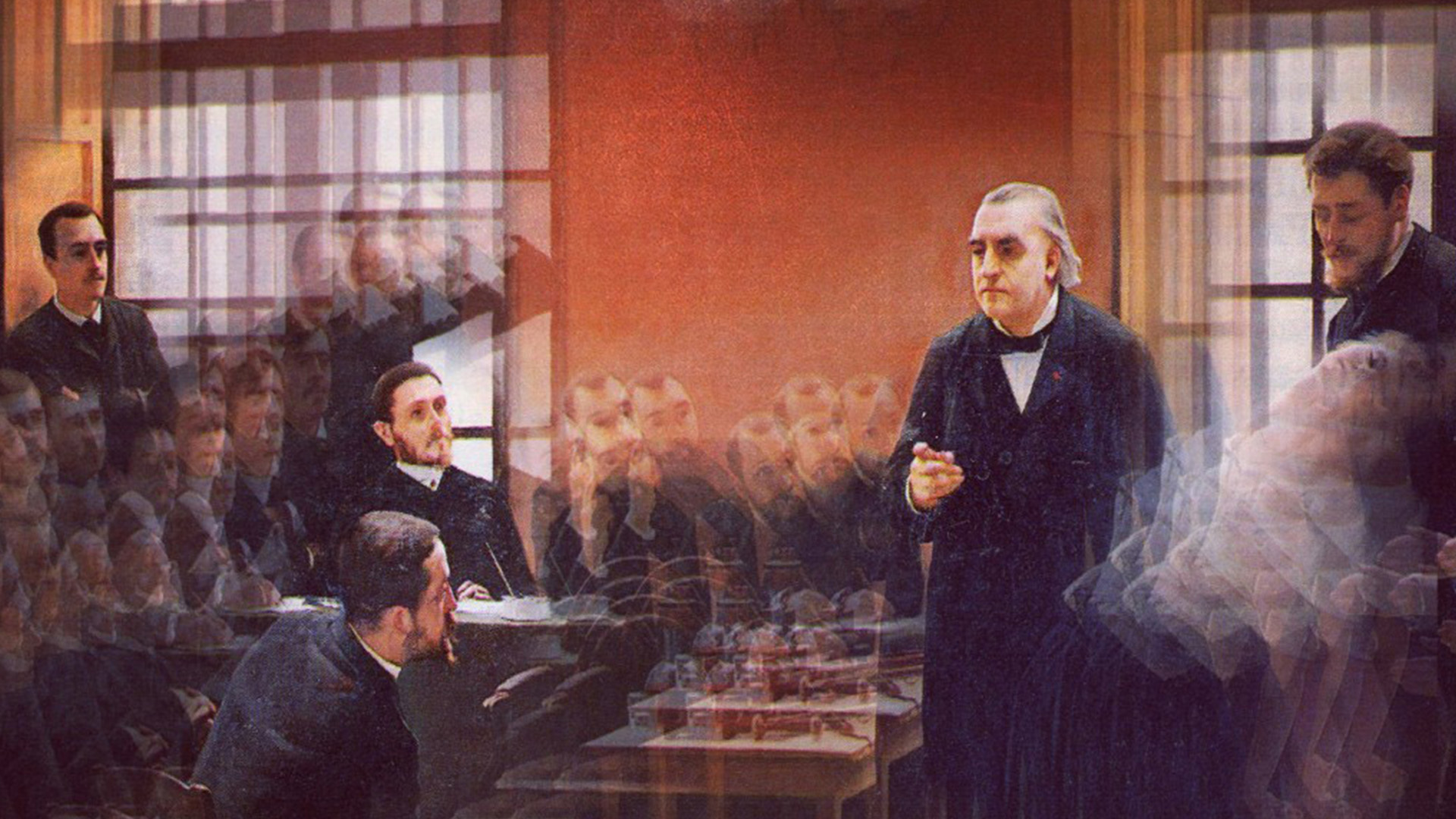
Painting by André Brouillet depicting French neurologist Jean-Martin Charcot delivering a clinical demonstration of hypnosis at the Pitié-Salpêtrière Hospital in Paris. Image via iyad laykah on Flickr
However, far from being simply the result of twenty-first-century neuroscience or the ‘corporeal turn’ in the humanities, essentially medical views of music have long had a profound, if not always obvious, impact on musical aesthetics. In particular, Enlightenment materialist views of music opened up the possibility of thinking of music as a matter of the stimulation of the nerves, which, for some, implied that one has unmediated knowledge of a piece of music in a way akin to how one knows the food one is eating. Medical understandings of the nervous system appeared to hold out the prospect of a solid grounding for musical emotions in science – what Johann Gottfried Herder called a ‘physiology of the human soul.’ 2 However, post-Enlightenment debates on music have also often reflected a profound conscious reaction against this quasi-medical approach, searching for a view of knowledge of music that could transcend its bodily location and its links to feelings.
Music and the nervous system
Medieval conceptions of music often had little to do with emotions or the material body, but did link it to health. Keeping the body and soul in alignment to cosmic order was key, understood in terms of Pythagorean speculations filtered through Plato, Boethius and Christian thinkers.3 Even heroes of the ‘Scientific Revolution’ like Johannes Kepler wrote at length about the literal harmonies of the universe.4 However, in the seventeenth century, the physics of acoustics and the anatomy of hearing and the nerves came to provide a basis for discussion of the power of music, as older traditions of the harmony of the spheres gradually faded into the realms of poetic tropes and occult esotericism.
Although the Jesuit polymath Athanasius Kircher was still asserting a model of the power of music based on Galenic medicine and numerology in 1650s, others were striking a very different tone. 5 Work on musical temperament moved away from pure ratios to irrational numbers that were less susceptible of being incorporated into systems of universal order. Jean-Philippe Rameau’s 1722 Traité de l’harmonie and Johann Mattheson’s Der vollkommene Capellmeister of 1739, the most significant works of music theory of the eighteenth century, both had a matter-of-fact approach to music’s effects that had little time for any of the broader cosmological speculations on number and symmetry that had traditionally been the implicit basis of the subject.Instead, much Enlightenment thinking on musical aesthetics turned to materialist physics and medicine. Traditional medical models of the human body based on ancient notions of balance and the humours were challenged (if not yet replaced) by the emerging science and medicine of the nervous system. Physicians such as Robert Whytt and William Cullen in Great Britain and others elsewhere in Europe developed what might be called the nerve paradigm of disease, at times asserting that nerves and stimulation were responsible for most sickness, both mental and physical.6
This approach was pioneered from the 1660s by the likes of Thomas Willis, who compared the movement of ‘the nervous liquor’ and animal spirits from the brain through the nerves to ‘a musical Organ’, and argued for the existence of ‘sonorous particles’ that transferred sound into activity in the brain via the animal spirits and the ‘nervous juice.’7 The French physician Joseph-Louis Roger’s 1758 Tentamen de vi soni et musices in corpus humanum even argued that musicians were generally mad because of the effect of music on their nervous fluids.8 By the eighteenth century, the conceptualisation of music as a form of nerve stimulation was becoming a commonplace, sparking sophisticated debates in a wide range of fields. A variety of theories about nerve function, involving animal spirits, nervous fluid and vibrating, tightening and electrical nerves, powerfully influenced thinking on music, often foreshadowing the twenty-first-century neuroscience of music.
The medicine of the nervous system had a profound influence on the period’s culture of sensibility (a term taken straight from medicine), configuring the nerves as ‘the anatomical guide to modern life’.9 Medical models of the nerves appeared to give a respectable basis for the cult of sentiment exemplified by the novels of the likes of Laurence Sterne and Samuel Richardson.10 From the 1740s, baroque-era Affektenlehre, the supposedly objective system of correspondences between musical features and clearly distinguished emotional affects, was challenged by a model of music’s effects based on subjective Empfindungen (sensibility). Music’s impact was thus a matter of spontaneous responses to music based on an individual’s nervous physiological and psychological make-up.
Seeing music in terms of the nervous system made possible an approach to music based on that sensibility, emphasising spontaneous, changing emotion, without a priori cosmological structures and objective correspondences. The empfindsamer Stil or galant music of the mid-eighteenth century associated with the musicians such as C. P. E. Bach, with its focus on accessibility and charm, reflected this approach. Much of the rhetoric of feeling in music that has been so influential in the past three hundred years was drawn directly from medical ideas that blurred distinctions between physical and emotional feeling.

Three young women making music with a jester (Anonymus artist from southern Netherlands, oil on oak panel, cca. 1500-1530). Image via Sothebys from Wikimedia Commons.
The same view of music as a form of physical stimulation led to a wave of works on music therapy. Whereas previous books on the subject had continued to focus on the correspondences between the cosmos and the soul, from the 1720s the nerves started to dominate. For instance, Richard Browne, in his Medicina musica (1729), explained the emotional impact of rapid string playing by suggesting that it led to the nerves being ‘briskly agitated, and give a brisk and lively Pleasure to the Mind, which by Sympathy will invigorate the Motion of the Spirits [in the nerves], and communicate a correspondent Sensation though the whole Machine’.11 He went on to suggest that refined nerves were a prerequisite for the appreciation of music, writing that there were some people who could ‘hear as clearly and distinctly as others’, but because of a lack of delicate and refined ‘Auditory Nerves’ were incapable of enjoying music properly.12
Other suggested that refined nerves, rather than being a prerequisite, could be the result of listening to music. Joseph-Louis Roger, in his 1758 Tentamen de vi soni et musices in corpus humanum, suggested that music could ‘disarm the criminal … rejuvenate his imagination and renew his sensibility’.13 Whatever the direction of causation, the medical arguments linking music, nerves and virtue may have been drawn from an attempt to put music therapy on a solid scientific basis, but they also paradoxically helped lay the foundations for persistent forms of Schillerian Humanistic idealism about classical music, with all of its associated issues of eurocentrism and class interest.
Musical aesthetics also drew heavily on this nerve stimulation model of knowledge of music’s effects. Johann Georg Sulzer’s Theorie der schönen Künste (1771–4), influenced by the Halle doctor Johann Gottlob Krüger, reflected a materialist and medical conception of the power of music that in some ways foreshadowed the neuroaesthetics of modern scientists like Semir Zeki.14 Sulzer depicted music as literally a matter of ‘blows’ or ‘shocks’ (‘Stöße’) delivered to the body, ‘spreading their effect throughout the nervous system’.15 The direct impact of music on the sympathetic nervous system, its power to make the body resonate, was central. The effect on the mind was of secondary importance. As Sulzer put it, ‘It does not require much consideration or much experience to discover the power of music. The inattentive person experiences it.’16 Views like this seemed to provide a justification for taking music seriously that did not rely on a text or older cosmological theories, making it a symbol of vigorous physical Lebenskraft (life force) rather than mathematical rationality. It also seemed to offer a way out of an aesthetics dominated by mimetic theory and rhetoric, linking music to the body and making the sensitive soul more fit for the Sturm und Drang era.
Johann Nikolaus Forkel’s Allgemeine Geschichte der Musik (1788) also sets out an explanation of music’s effects that focused on the nerves, drawing on Sulzer. Being a musical person was a question of having nerves, he suggested.17 He argued that music had a direct effect on the nerves akin to the power of the mind itself, and that this effect is enough to explain its emotional impact, without particular recourse to the imagination. As he put it:
The passionate impressions of the soul are thus inseparably linked to certain movements in the nervous system or in the finer parts of the body that one can call the animal spirits, and are maintained and strengthened by the perception of this movement. The corresponding nervous convulsions arise in the body when a passionate impression has previously been awoken in the body, just as the other way round, when passionate impressions are created when related convulsions have been stimulated in the body. The effect is reciprocal. The path that leads from the soul to the body, leads back to the soul. Since the convulsions of the nervous system are affected by nothing more than by music, the reciprocal relationship of the movements in the air and in the nerves are sufficient to explain the power and force that even individual sounds can have on people’s hearts.18
However, the proponents of this materialist conception of how music works have not had things their own way since the Enlightenment. Already in 1782 Johann Joseph Kausch roundly rejected the ‘mechanical’ model put forward by Sulzer, arguing that there was a ‘bottomless chasm’ between neurology and the soul that limited what medicine could tell us about musical emotions, prefiguring some of the critique levelled against the neuroscience of music today from people like Raymond Tallis.19
Absolute Music
After 1800 the aesthetics of music often rejected the physiology of nerves as a fundamental explanation for music’s power, turning instead to the transcendental subject. Nevertheless, it could be argued that medical views continued to have a profound influence on the new aesthetics in a dialectical sense. Just as medicine helped create the basis for an understanding of music in terms of nervous sensibility, virtue and health in the mid-eighteenth century, it also ensured that that combination fell apart. By boiling music down, so to speak, to nervous stimulation, proponents of an essentially materialist and medically-informed model had, by the late eighteenth century, helped make it concept-free, removing the need to justify it in terms of cosmic harmony, mimesis or any specific text. After 1800, other commentators took this view of instrumental music as abstract and without content, and made it the basis of a new metaphysics of music, one based on the disinterested appreciation of form, the sublime and the autonomous work.
Kant’s aesthetics played an important role in this shift. As it happens, he himself viewed music in terms very similar to many of his Enlightenment contemporaries. For him it was primarily physical, as he said, it ‘merely plays with sensations’. Instrumental music was thus little higher than cooking in the hierarchy of arts. Nevertheless, his ideas helped put the quasi-disembodied subject rather than the nerves at the heart of knowledge of music. As Kant put it, ‘Pure judgement of taste is independent of charm [‘Reiz’, i.e. stimulation] and emotion.’ In a sense, in much late Enlightenment aesthetics all music had been a matter of the nerves, but, the next generation of aestheticians, grappling with Kant’s ideas, laid the foundation for the denial of the senses and physicality in Idealist music aesthetics that was the basis for a model of ‘structural listening’.
Already around 1800 Christian Friedrich Michaelis was beginning to incorporate a sublime view of music into Kant’s Idealist aesthetic. For Michaelis, music could not be reduced to the ‘mechanical shakings of the air and the nerves’.20 Michaelis sharply distinguished musical listening from mere nerve stimulation, writing that, ‘These sounds initially affect the senses. The nervous system is stimulated by them to a greater or lesser extent … This is only its mechanical or physical impact. But through imagination and the internal mind these aural impressions are grasped as internal transformations.’21 Knowledge of music was something pieced together by the mind and the imagination, not an unmediated physical sensation. By arguing that true listening was an active attempt to mentally and emotionally grasp the whole form of the piece of music, not just passively receiving stimulation, people such as Michaelis were creating a whole new metaphysics of music, based not on ignorance of the role of nerves in listening, but on a conscious rejection of it as the basis for aesthetics.
Drawing on ideas like these, early nineteenth-century German writers on music created an aesthetic of ‘absolute music’ (i.e. a defence of instrumental music as a transcendental art, formed of autonomous works) that implied a division between serious music relating to the Geist and supposedly feminine, sensual music that merely stimulated the nerves. Many commentators, especially in Germany, were at pains to say that music’s effects and knowledge of its character were achieved via the mind and imagination and not simply through nervous ‘spasms’.
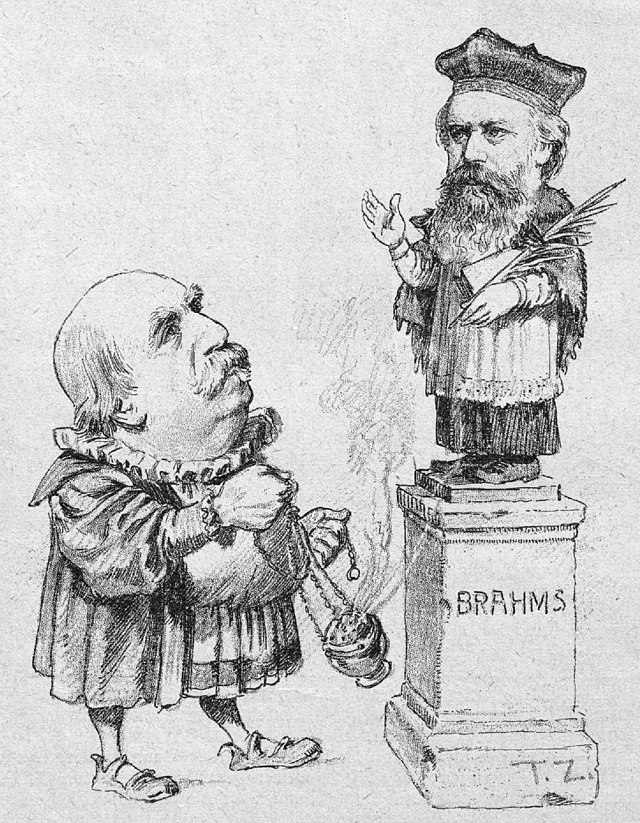
Eduard Hanslick adoring Brahms; cartoon from the Viennese journal ‘Figaro’, 1890. Image via Theo Zasche from Wikimedia Commons.
The Berlin music criticism of the likes of A. B. Marx and Ludwig Rellstab reflected this approach. They used such ideas to promote not only a new aesthetic but also a new kind of music – German, intellectual, earnest and masculine, as A.B. Marx’s statements about Beethoven and the ‘Vergeistigung’ of music (making spiritual or mental – as opposed to physical) make clear. This Idealist model of knowledge of music and emotions had a complicated relationship to Romanticism more broadly understood. There were certainly many nineteenth-century Romantic writers on music who supported the Idealist defence of music as a transcendental art and at the same time advocated a cult of feeling in music, drawing on Enlightenment sensibility and the Edmund Burke’s sublime (which had its own strong medical background) to argue that only through emotion could one know music.
This mixing of materialist and Idealist views got short shrift in the most influential mid-nineteenth-century work on musical aesthetics, Eduard Hanslick’s 1854 Vom Musikalisch-Schönen, which explicitly rejected the role of feeling in knowledge of music. For Hanslick, real musical appreciation was really nothing to do with feeling at all. He denied that the aim of music was to excite or elicit feelings or that emotions were the subject of music. ‘The beautiful is and remains beautiful though it arouse no emotion whatever, and though there be no one to look at it.’22 He brilliantly argued for music’s special claim to be understood in its own abstract terms, but even he acknowledged the reality of the role of the body. He admitted the reality of the ‘greater intensity’ of music impact ‘on our nerves … the invisible telegraphic connection between mind and body’23 but, like Kausch before him, doubted that physiology really had anything to tell us about the aesthetic character of musical experience. While he was happy to admit the existence of emotional responses to music, he insisted that they formed no kind of knowledge, despite what ‘aesthetic enthusiasts’ in their ‘tinkling opium-dreams’ might think. He went on to say:
I firmly adhere to the conviction, that all the customary appeals to our emotional faculty can never show the way to a single musical law… Such systems of aesthetics are not only unphilosophical, but they assume an almost sentimental character when applied to the most ethereal of all arts, and though no doubt pleasing to a certain class of enthusiasts, they afford but little enlightenment to a thoughtful student, who, in order to learn something about the real nature of music, will, above all, remain deaf to the fitful promptings of passion, and not, as most manuals on music direct, turn to the emotions as a source of knowledge.24
Despite this rejection of emotion and the nerve paradigm, the influence of medical thought on Hanslick is clear. He overtly privileged ‘aesthetic’ appreciation of form over ‘pathological’ listening that merely stimulates the nerves, alluding to decades of writing on the dangers of music to health, and, indeed, to the whole Enlightenment nerve model. It is also worth noting that Hanslick is regularly cited in twenty-first-century neuroscience. It is curiously easy to combine his view of music as a matter of the disinterested appreciation of form with neurological insights into music’s impact, since they can both be understood at an abstract level, beyond considerations of individual feeling and cultural context.
Hanslick’s dichotomy between ‘real’ music that appeals to the soul and ‘sick’ music that titillates the body was part of the broader development of a discourse on pathological music that emerged in the nineteenth century and reached its apogee with the Nazi concept of ‘degenerate’ music.
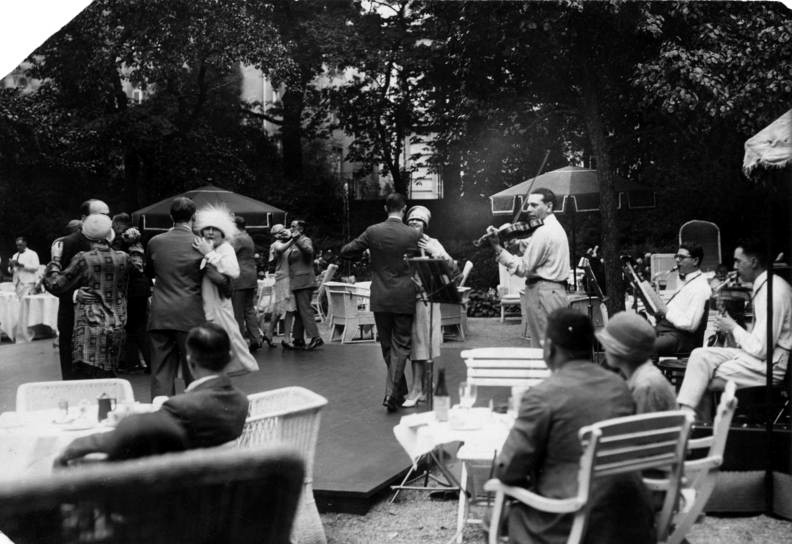
Jazz was heavily restricted under the Nazi rule, deemed ‘degenerate music’. Photo via ADN-Zentralbild/ Archiv, Berlin 1926 from Wikimedia Commons.
In the Enlightenment, a new emotional intensity became part of the public culture of music, often with a medically derived context. For instance, a member of the audience at a performance of a Gluck opera reported that, ‘From the first measures I was seized by such a strong feeling of awe, and felt within me so intensely that religious impulse that penetrates those who attend the ceremonies of a revered and august religion, that without even knowing it, I fell to my knees in my box and stayed in this position, supplicant and with my hands clasped, until the end of the piece.’25
Whereas extreme physical responses of that kind were often understood in a context of the culture of refined nerves and sensibility in the eighteenth century, after 1800 discussions of music’s medical impact were regularly seen in terms of a wider critique of sickly and corrupting modern life. The dialectic between the idea of music as metaphysics and music as sensuality that has played out since Plato thus took on a medical aspect. It is no coincidence that this shift from sensibility to pathology happened at the same time as the rise of Idealist musical aesthetics, which asserted the centrality of a quasi-disembodied subject rather than the nervous system in explanations of music’s effects. For many critics, there was an implicit division in the world of music between healthy music that appealed to the soul and depraved ‘modern’ music that overstimulated the nerves. Thus, even as the Idealist view of music became influential, the medical model survived as an explanation for ‘bad’ music.
Neuroscience and the new musicology
Since that time, the relationship between medical conceptions of music as stimulation and Idealist views has developed in various ways. In the twentieth century, Americans such as Carl Seashore, Max Schoen and Walter Van Dyke Bingham built up the experimental psychology of music as a subdiscipline, drawing on the earlier work of Germans such as Wilhelm Wundt. Self-reported emotional responses, along with empirical physiological data, made feeling a key form of knowledge about music, with strong institutional support from universities, as well as from commercial phonograph producers. Their approach marked a crucial shift from a focus on active engagement with music – that is, bourgeois models of playing and Hanslickian structural listening – to a model of music as a form of consumption, facilitated by the phonograph, with potential health benefits almost like consuming a cup of coffee. The role of technology strengthened the stimulation model of music, with researchers using phonographs with explicit emotional titles and goals to change moods, rather than to express it.26
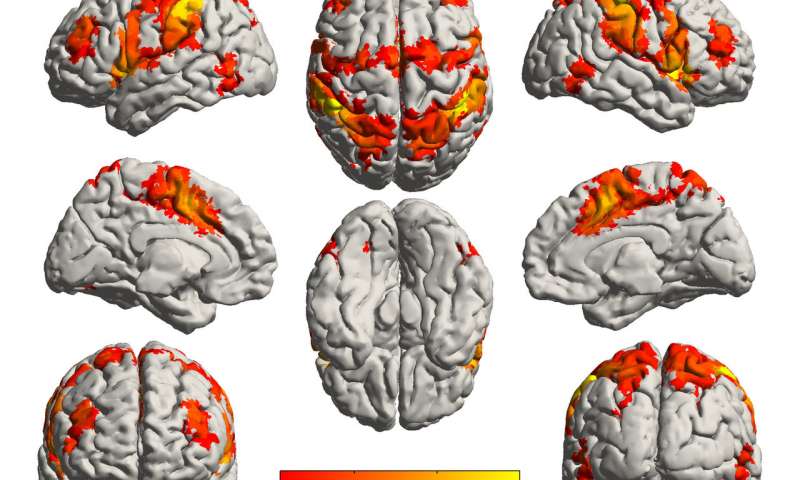
Diagram of brain networks involved in processing attention. Image via Brain Network Lab on Medical Xpress.
While music psychology continues to use self-reported emotional states as data to this day, in the last twenty years there has been a boom in a more directly medical way of approaching music in the form of neuroscience. One of the principal reasons for this has been remarkable advances in brain imaging technology. PET scans (using radioactive tracers), MRI scans (mapping blood flow in the brain) and the like have provided a huge amount of new information about exactly how music affects the brain, but they have created significant and intriguing intellectual challenges. They have also provided the basis for the development of Neurologic Music Therapy (NMT), which seeks to give music therapy a standardised scientific basis based on understandings of the brain. This paradigm of looking at music is becoming more and more influential, and we seem to have returned in some ways to an essentially Enlightenment view of music as a matter of the nervous system.
It is perhaps no coincidence that this medical approach to music has arisen at the same time as the so-called New Musicology, with its parallel focus on music and the body. At a time when the ideology of Absolute Music has been under attack from all sides (in terms of race, gender, class hierarchy, etc.), both represented attempts to find a new basis for knowledge about music in the body. Future models of music, the brain and emotions would perhaps benefit from a clearer conceptual understanding of terms related to feeling, drawing on insights from the history of emotions that has shown the extent to which much of our terminology of emotion is historically determined. Embodied conceptions of how music works, inevitably based on medical and scientific knowledge, are clearly here to stay. Music, the quintessence of mathematical rationality and of sensual irrationality, remains caught between an ‘inescapable body’ and the urge to transcend it intellectually.27
See James Kennaway, Bad Vibrations: The History of the Idea of Music as a Cause of Disease, Farnham, 2012.
‘Physiologie der menschlichen Seele.’ Johann Gottfried Herder, Kritische Wälder oder Betrachtungen über die Wissenschaft und Kunst des Schönen. Viertes Wäldchen. Über Riedels Theorie der schönen Künste. In Herder, Werke (Wolfgang Pross, ed.), (Vienna, 1987), 2, 59–213, here 146.
Francesco Pelosi, ‘Music, Mind and Wellbeing in Antiquity,’ in Penelope Gouk, James Kennaway, Jacomien Prins and Wiebke Thormaehlen (eds.), The Routledge Companion to Music, Mind and Wellbeing (Abingdon: Routledge, 2019), 19–32, David S. Chamberlain, ‘Philosophy of Music in the Consolatio of Boethius,‘ in Speculum, 45 (1970), 80–97, Martin West, Ancient Greek Music (Oxford: Clarendon, 1992).
D. P. Walker, ‘Kepler’s Celestial Music’, in Journal of the Warburg and Courtauld Institutes, 30 (1967), 228–250; W. Harburger, Johannes Keplers kosmische Harmonie (Leipzig: Insel Verlag, 1925).
Penelope Gouk, ‘Making Music, Making Knowledge: The Harmonious Universe of Athanasius Kircher,’, in Daniel Stolzenberg (ed.), The Great Art of Knowing: The Baroque Encyclopedia of Athanasius Kircher (Stanford, 2001), 71–83.
George Rousseau, Nervous Acts: Essays on Literature, Culture and Sensibility (Basingstoke: Palgrave, 2004).
Thomas Willis, The Anatomy of the Brain (Tuckahoe: USV Pharmaceutical Corp., 1971), 105. Thomas Willis, ‘Two Discourses Concerning the Soul of Brutes,’ in The Remaining Medical Works (London, 1683), 69–74.
Cited in Edward Podolsky, ‘Music and Health,‘ in Canadian Medical Association (February 1934), 195-200, here 198.
George S. Rousseau, Nervous Acts: Essays on Literature, Culture and Sensibility (Basingstoke: Palgrave, 2004), 55.
G. J. Barker-Benfield, The Culture of Sensibility: Sex and Society in Eighteenth Century Britain (Chicago, 1992), Frank Baasner, Der Begriff ‘Sensibilite’ im 18. Jahrhundert: Aufstieg und Niedergang eines Ideals (Heidelberg, 1988).
Richard Browne, Medicina Musica; or a Mechanical Essay on the Effects of Singing Music, and Dancing on Human Bodies (London: J. Cooke, 1729), 36.
Ibid 34.
Joseph-Louis Roger, Traité des effets de la musique sur le corps humain (Paris: Chez Brunot, 1803), translated from Latin and introduction by Etienne Sainte-Marie, xxix.
Semir Zeki, Splendor and Miseries of the Brain (London: Wiley, 2008).
Johann Georg Sulzer, Allgemeine Theorie der schönen Künste (Leipzig: Weidmann, 1793) III: 422.
Ibid.
Johann Georg Sulzer, Allgemeine Theorie der schönen Künste (Leipzig: Weidmann, 1793) II, 8.
Johann Nikolaus Forkel, Allgemeine Geschichte der Musik, 2 vols. (Leipzig: 1788) II, 10.
Johann Joseph Kausch, Psychologische Abhandlung über den Einfluß der Töne und ins besondere der Musik auf die Seele; nebst einem Anhang über den unmittelbaren Zweck der schönen Künste (Breslau, 1782), xii, Raymond Tallis, ‘Was Schubert a musical brain?’ in Reflections of a Metaphysical Flaneur (London: Routledge, 2014), 46-55.
Christian Friedrich Michaelis, Über den Geist der Tonkunst, mit Rucksicht auf Kants Kritik der aesthetischen Urtheilskraft (Leipzig, Schaefer, 1800), 4.
Christian Friedrich Michaelis, ‘Nachtrag zu den Ideen über den ästhetischen Natur der Musik’, Eunomia 1.1 (1801), 343–348, (344-345).
Eduard Hanslick, Vom Musikalisch-Schönen (Leipzig: R. Weigel, 1858), 22.
Ibid. 86.
Ibid. 8, 19.
James H. Johnson, Listening in Paris: A Cultural History (Berkeley and Los Angeles: University of California Press, 1996), 61.
Marta Garcia Quinones, ‘What is this Music Doing to Me?’: Psychological Experiments on the Effects of Music on Mood in the First Half of the Twentieth Century,’ in Penelope Gouk, James Kennaway, Jacomien Prins and Wiebke Thormaehlen (eds.), The Routledge Companion to Music, Mind and Wellbeing (Abingdon: Routledge, 2019), 135–148.
Susan McClary, ‘Music, the Pythagoreans and the Body’, in Susan Leigh Foster (ed.), Choreographing History (Bloomington, 1985), 82–104, (83).
Published 24 January 2020
Original in English
First published by Positionen 121 (2019) (German version); Glissando 36 (2019) (Polish version)
Contributed by Positionen © James Kennaway / Positionen / Glissando / Eurozine
PDF/PRINTNewsletter
Subscribe to know what’s worth thinking about.
Related Articles
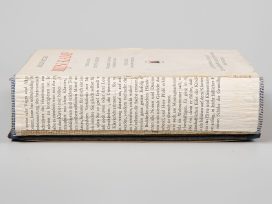
The elasticity of morals
100 Years of ‘Mein Kampf’
A century after publication, ‘Mein Kampf’ is instructive not just of the mass appeal of delusional xenophobia, but also of the circumstances under which morality can become a form of terror.

Imperial Russia saw the nation as the sea into which all the other Slavic cultures flowed. The idea persists today not only in Russia’s attitude towards its neighbourhood, but also in the way eastern Europe is studied in the West.

